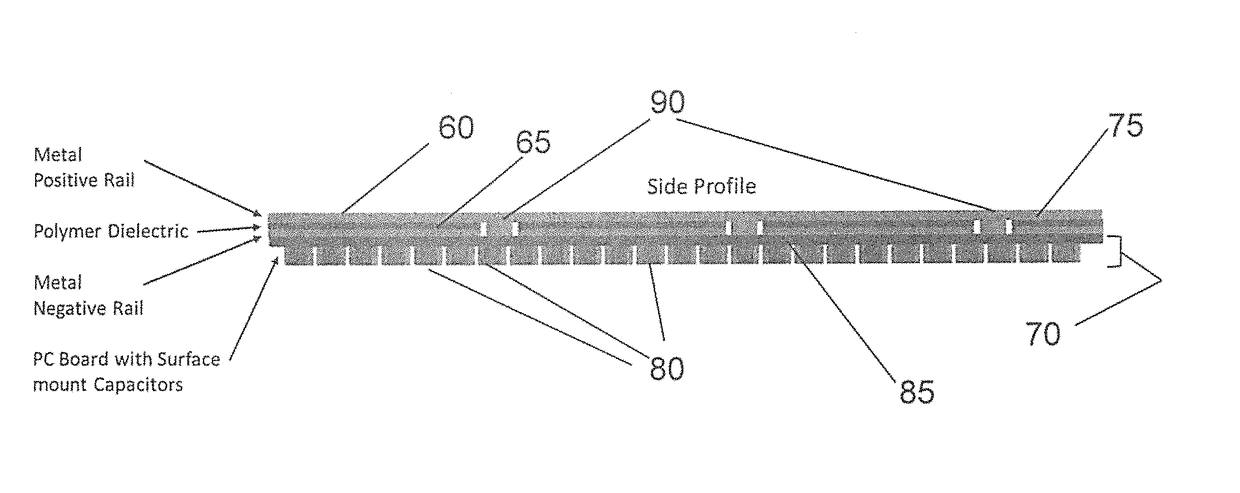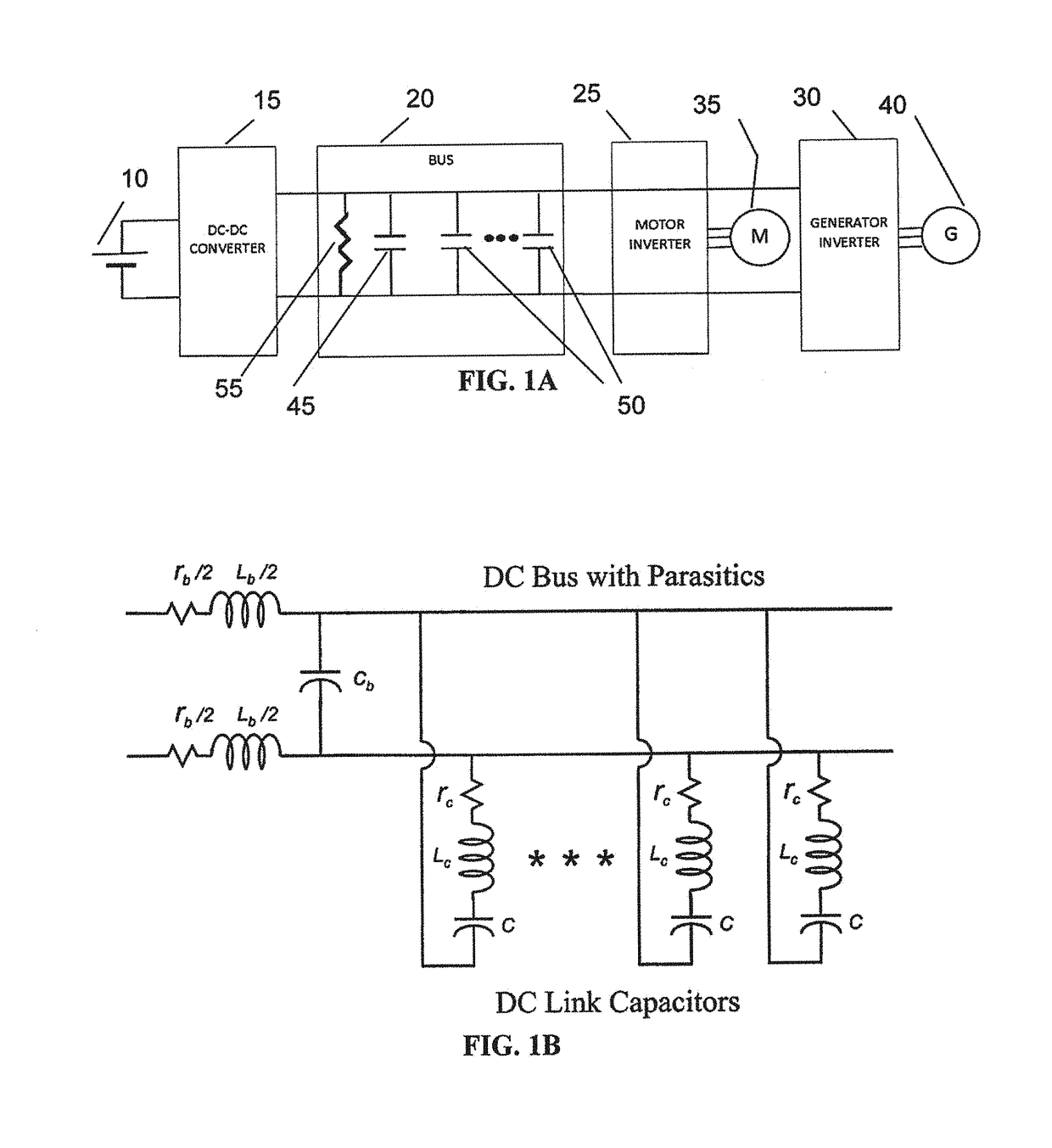Low-inductance direct current power bus
a direct current power bus and low-inductance technology, applied in the field of electric power systems, can solve the problems of increasing the difficulty of further improvement of device performance, the severe demands of power-handling ability and reliability of power transistors that perform the switching function, and the large number of mlccs, so as to reduce the inductance, reduce the total number of mlccs, and reduce the effect of inductan
- Summary
- Abstract
- Description
- Claims
- Application Information
AI Technical Summary
Benefits of technology
Problems solved by technology
Method used
Image
Examples
example
Prototype
[0057]FIG. 3 is derived from a photographic image of the PCB used for our prototype. The PCB 95 was 6″×11″ in lateral dimensions, and it had a thickness of 0.062″. It had two conductive copper layers, with the required spacing between voltage potentials for avoidance of electrical breakdown. This was very important due to the high voltage and current levels present during operation.
[0058]An array of 336 MLCC capacitors 100 was connected in parallel to the PCB, providing a total nominal capacitance of 50.4 μF.
[0059]A multiple via-in-pad technique was used to connect the MLCCs to the PCB. This technique helped to minimize the loop inductance because it obviated the use of laterally extending conductors to make electrical connections.
[0060]The use of 2 oz. copper planes in the PCB facilitated heat dissipation and offered relatively low DC electrical resistance.
[0061]The bus plates, which matched the profile of the circuit board, were made of aluminum. As noted above, they serv...
PUM
 Login to View More
Login to View More Abstract
Description
Claims
Application Information
 Login to View More
Login to View More - R&D
- Intellectual Property
- Life Sciences
- Materials
- Tech Scout
- Unparalleled Data Quality
- Higher Quality Content
- 60% Fewer Hallucinations
Browse by: Latest US Patents, China's latest patents, Technical Efficacy Thesaurus, Application Domain, Technology Topic, Popular Technical Reports.
© 2025 PatSnap. All rights reserved.Legal|Privacy policy|Modern Slavery Act Transparency Statement|Sitemap|About US| Contact US: help@patsnap.com



